Increasing Toast Character in French Oak Profiles
Beaulieu Vineyard 2006 ChardonnayDomenica Totty, Beaulieu Vineyard
David Llodrá, World Cooperage
Dr. James Swan, Consultant
Abstract
Four new barrel profiles were developed with the aim of producing toastier versions of well established European style barrels. These include water bent as well as conventional fire toasted barrels.
The new barrels are styles based upon World Cooperage profiles 1, 2, 3, and 4, which have become very popular. Because these profiles have statistically validated time-temperature relationships with known flavors and well understood chemistry, they are ideal springboards to create the new barrels. Each profile was examined and modified in a way that could increase toast yet maintain the style of the existing barrel.
The results show that this aim was achieved. Thus:
- In all except one case (profile 77), furfural was significantly increased by 50% or more. This was at the expense of 5-hydroxymethyl furfural which is a marker for less intense, light toast flavors.
- Profile 77 increased in vanillin but not toast or smoke per se.
- In profile 76 smoke was increased, but only to phenol which has a low impact medicinal character. Toast of heavier style, for which furfural is a good marker, increased while maintaining the lighter toast flavors such as creamy fudge flavors from furaneol and 5-hydroxymethyl furfural.
- Only toast and smoke attributes were significant in the sensory evaluation and 75% of the new profiles were perceived toastier than the original profiles.
- Furfural, 5-methyl furfural, and vanillin were positively correlated to the toast sensory attribute. Accordingly, new barrel profiles are available that enhance toast character.
Introduction
Toasted oak characters have long been associated with wines matured in oak barrels. This is due mainly to the extraction of hemicelluloses caramelization compounds into the wine. These compounds are many in number and have descriptions that range from light cream and fudge through cream soda, toffee, dark coffee to burnt toast. Oak hemicellulose (often referred to as ‘wood sugar’) is very sensitive to heat and caramelizes quite rapidly. Which of the various descriptive terms just mentioned are found in a wine depends upon the amount of heat applied during barrel toasting.
Profiles 1 through 4 were developed several years ago to emulate popular European toasts that have a lower toasted oak impact. Since their introduction, all four profiles have been well received. Therefore, it seemed appropriate to enhance toast without otherwise altering the style of each barrel profile for wineries desiring more toasted oak character in Profiles 1 through 4.
The Wine
Producer: Beaulieu Vineyard
Year: 2006
Variety: Chardonnay
Vineyard: BV9
Crush Date: 10/4/2006
Harvest Data
- Total Acidity: 7.6
- Brix: 23.3
- pH: 3.37
- Prior to fermentation, added: DAP; Fermaid K
- Days of fermentation: 40 days
- Fermented with: D254
Wine Analysis as of 12/8/2006
- Alcohol: 13.2%
- Total Acidity: 5.4
- Volatile Acidity: 0.016
- Free Sulfur Dioxide: 33
- Total Sulfur Dioxide: 64
- pH: 3.6
- Residual Sugar: dry
Oak Data
Trial Execution
Sample Size: 4 barrels per variable
Oak Contact Time: 6 months
Bottling Date: 04/12/2007
The Trial
Variables:
Profile 1
Profile 2
Profile 3
Profile 4
Profile 75
Profile 76
Profile 77
Profile 78
Results and Discussion
The time-temperature curves of the four profiles were inspected to see how the level of toast might be increased. After consideration of how the oak’s chemistry might be selectively changed, four modified profiles were created. These new time-temperature curves (profiles 75 to 78) are shown beside the original versions (profiles 1 to 4) in Figure 1.
Figure 1. Comparison of original profiles and the toastier version
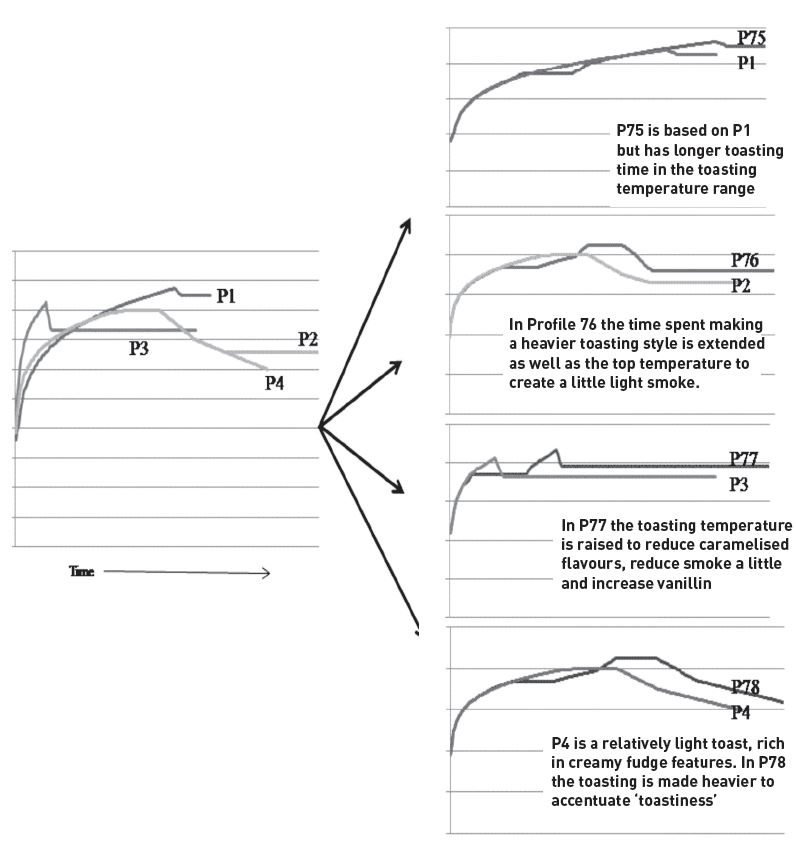
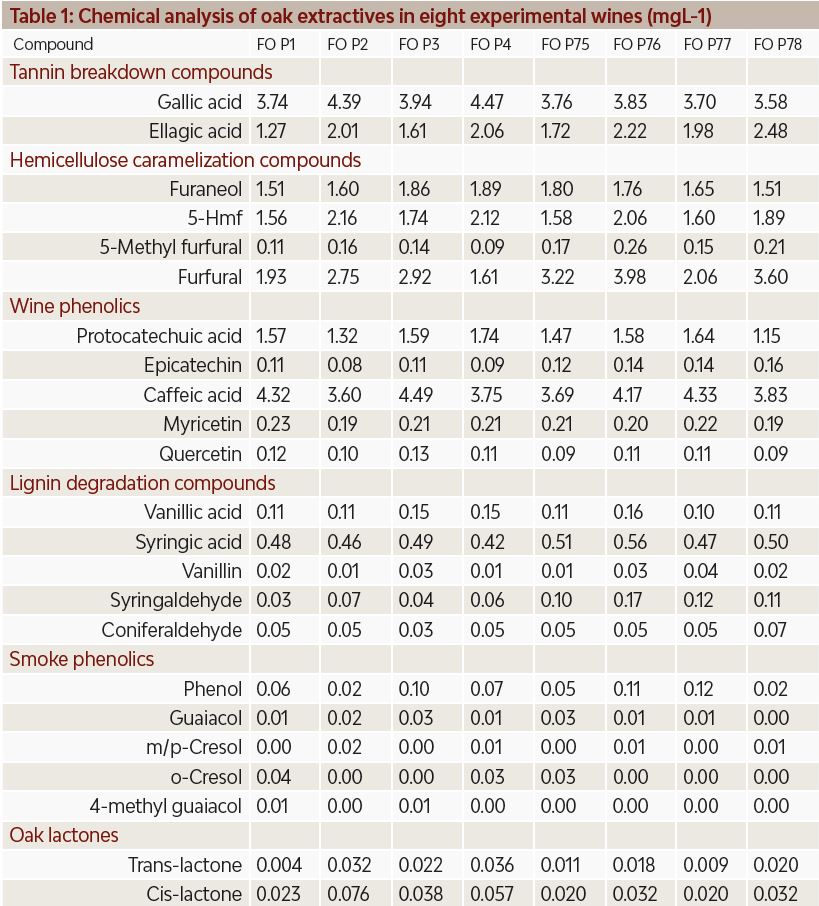
In this technique, each wine sample from the profiled barrels has its own location on the chart that depends upon how much of each extractive it contains. The samples are shown as small barrels. Some of the compounds that were analyzed are shown as black lines. It can be seen that two of the compounds that are closely associated with the newer, toastier barrels (i.e. they are ‘correlated with’ the group) are 5-methyl furfural and furfural. These two compounds are good markers for heavy toast flavors.
Figure 2. PCA evaluation of the major findings from Table 1 that included chemical analysis of the extractives from each profile
In every case the amount of energy used during toasting was increased to create more toast. However, the temperatures reached and the dwell times were different to create a different style of flavor. Thus, in creating Profile 75 from the style of Profile 1, the time spent in the highest of the hemicelluloses caramelization range was extended. The intention was to create more of the heavier toast flavors without any significant increase in vanillin or smoke phenolics.
Profile 76 was created from the style of Profile 2. In this case a heavier style of toast flavor was sought plus a hint of light aromatic smoke. This was achieved by raising the toasting temperature up to the mid-400’s Fahrenheit, then dropping back into the middle of the toasting region for an extended time.
In Profile 77 the toasting temperature was slightly raised to minimize smoke formation and enable a small increase in vanillin production. The existing Profile 4 gives relatively light toast compounds that tend to be rich in cream fudge flavors. It was modified to create Profile 78 in a manner intended to generate heavier toast flavors.
The Chardonnay made from the profile barrels was submitted to sensory evaluation and chemical analysis of the major extractives together with selected wine phenolics. The results of the chemical analysis using a combination of gas chromatography mass spectrometry and two liquid chromatography (hplc) procedures are shown in Table 1.
To the casual observer and experienced experimenters alike, it is difficult to see the extent of the similarities and differences between different barrels just by looking at the table. One technique used to simplify such data shown above is Principal Component Analysis (PCA). It captures essential features in two dimensions (e.g. as a chart). The main findings in this case are illustrated in Figure 2.
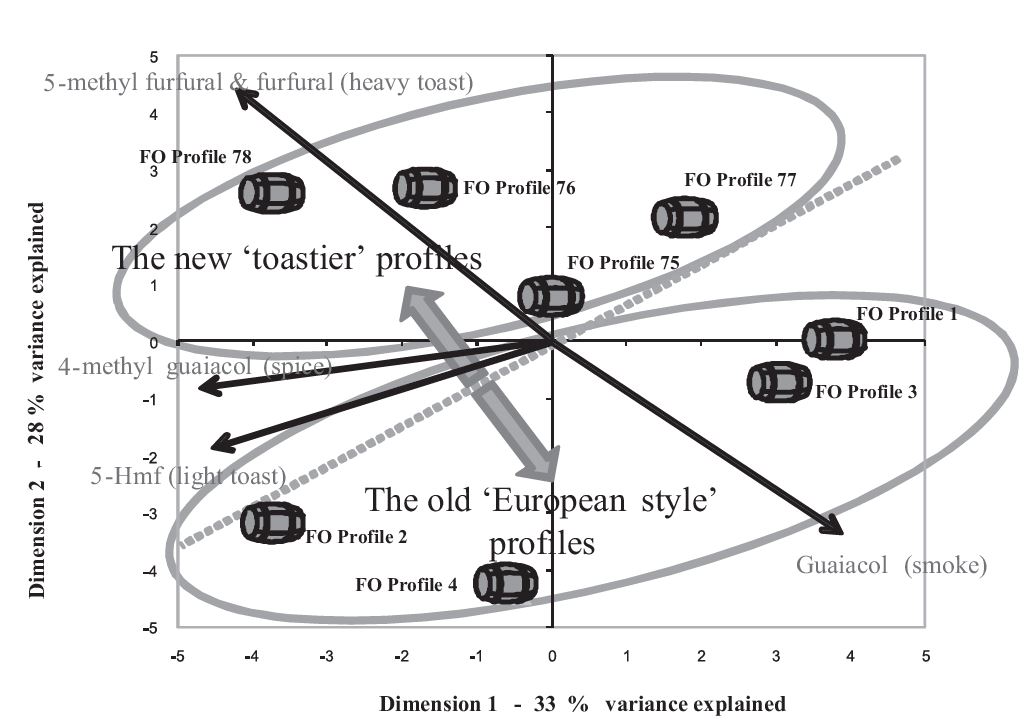
The role of these toast markers may be illustrated by comparing their amounts in each of the wines as a bar chart in Figure 3. With only the exceptions of profiles 3 and 77, 5-methyl furfural and furfural are approximately 50% higher in the new toastier profiles.
Vanillin is an important extractive in terms of flavor. However, it is not a toast flavor and it does not derive from wood sugar caramelization.
Figure 3. Levels of the toast markers 5-methyl furfural & furfural (mgL-1)
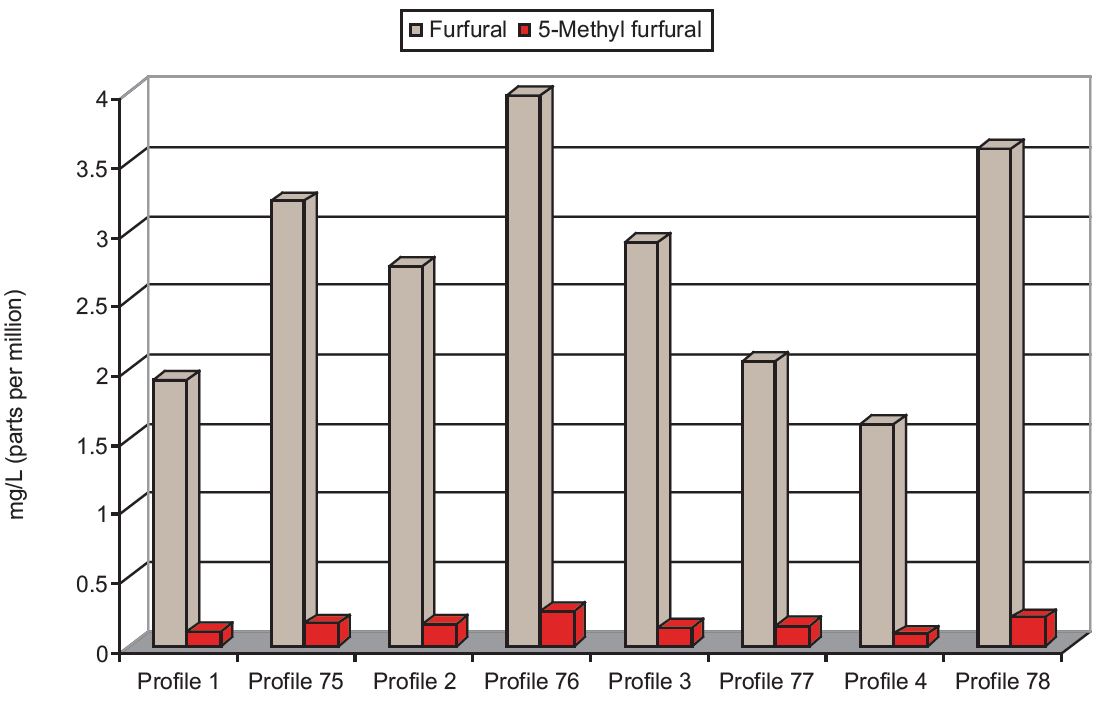
Figure 4. Vanillin levels in the eight samples of wine (mgL-1)
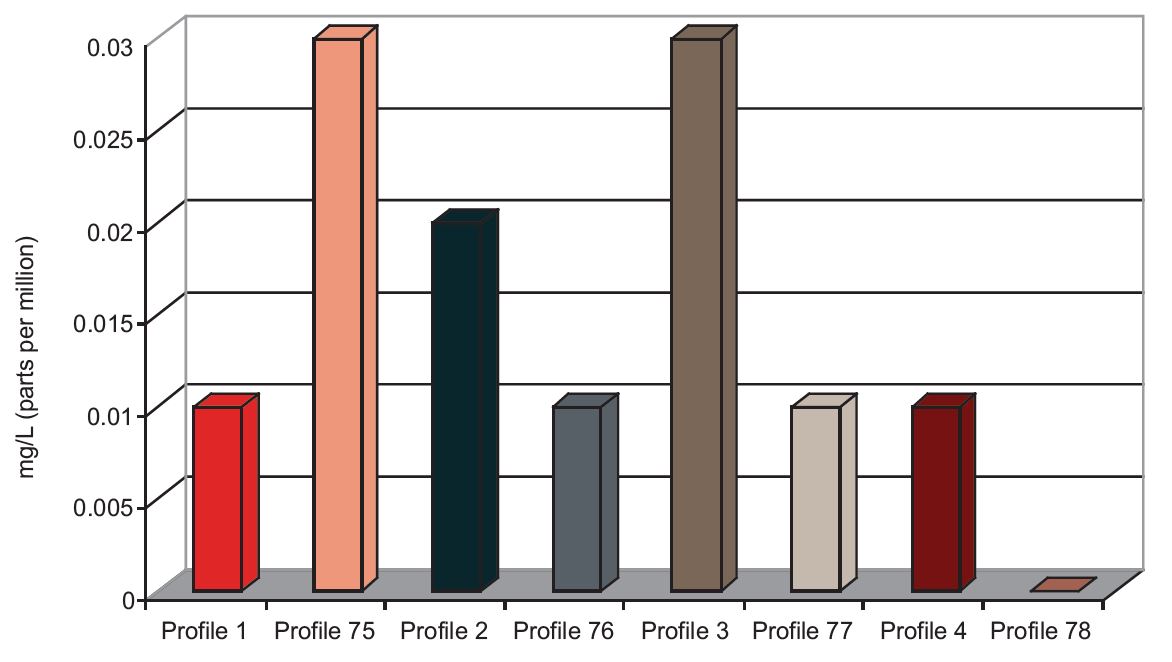
Toast may also possess some smoke features. However, in creating the new profiles, care was taken to avoid the higher smoke producing temperatures. This is demonstrated in Figure 5 which shows the levels of guaiacol in the wines. This compound has the lowest threshold in the steam volatile family, all of which are smoky.
Figure 5. Guaiacol in the eight wine samples (mgL-1)
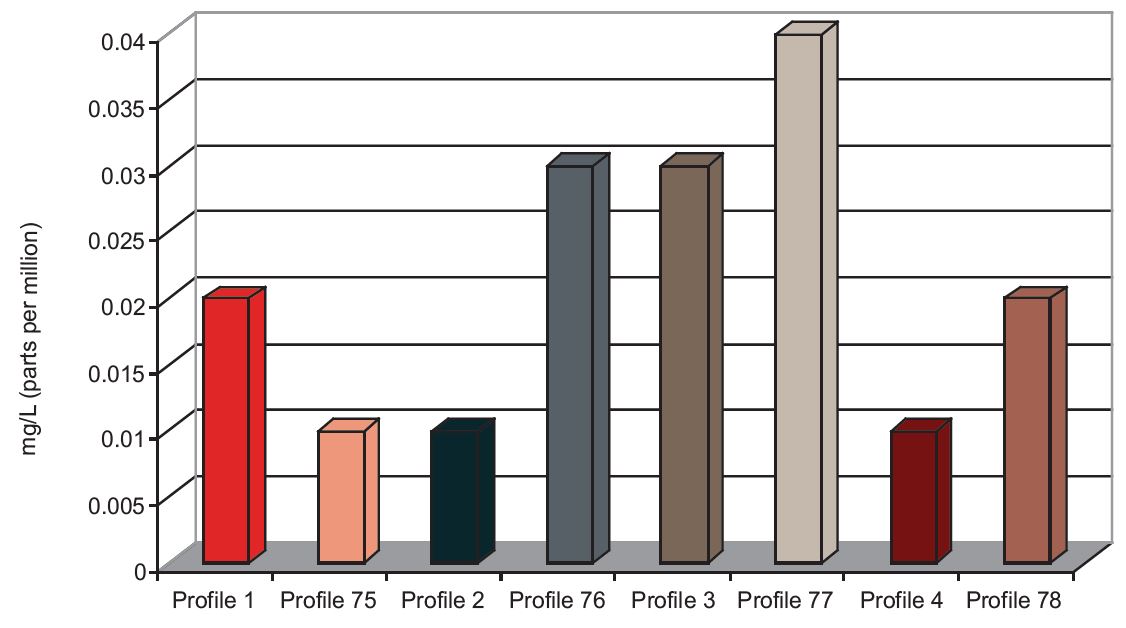
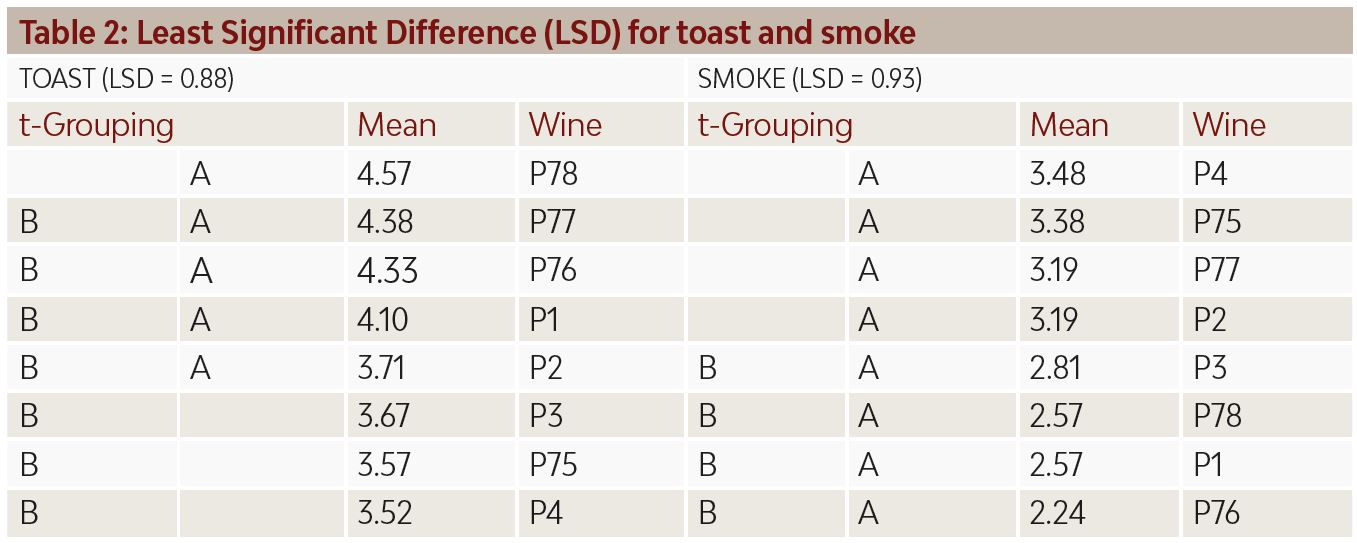
Even though the chemical analysis shows small amounts of guaiacol, the perception of smoke by humans is due to the combination of several chemical compounds formed during toasting at temperatures above 400ºF. As said before, guaiacol is one of the chemical markers used to evaluate the formation of steam volatile compounds. In Figure 5, Profile 3 and Profile 75 show the highest levels of guaiacol. In the LSD table for smoke, Profile 75 is perceived second highest in smoke but other factors are affecting the perception in the other profiles.
Similar to the perception of smoke is the perception of toast. Several compounds are chemically analyzed as markers for toast and the perception of it is due to the combination of a large number of hemicellulose caramelization compounds. Furfural and 5-methyl furfural are normally the chemical markers used to see the level of toast and in this experiment most of the toastier profiles showed higher levels of these compounds. The sensory evaluation showed that 75% of the toastier profiles were perceived toastier than the corresponding original profile.
The Principal Component Analysis (PCA) for sensory results is shown in Figure 6 as a way to see the influence of each attribute in the distribution of all the barrel profiles. All the attributes have been plotted because they have an influence in the distribution even though only smoke and toast were significant in this case.
Figure 6. Principal Component Analysis (PCA) for sensory results
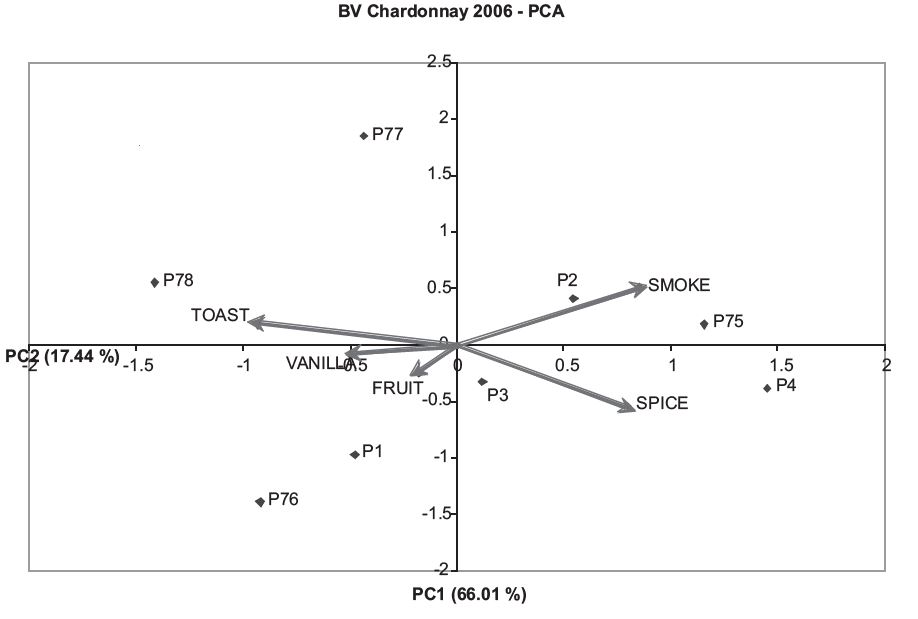
It is obvious in Figure 6 that profiles 1, 76, 77, and 78 are driven by toast. Profile 78 is the toastiest. The remaining barrels are driven by smoke. Profiles 4 and 75 are highest in smoke.
Partial Least Squares (PLS) analysis was conducted to find positive correlations between chemical and sensory results. In Figure 7, the outer ellipse is the unit-circle and indicates 100% of explained variance. The inner ellipse indicates 50% of explained variance. Thus, the area between the two ellipses in the Correlation Loading Plot explains from 50% to 100% of the variance. Next, we examine the variables included in this area.
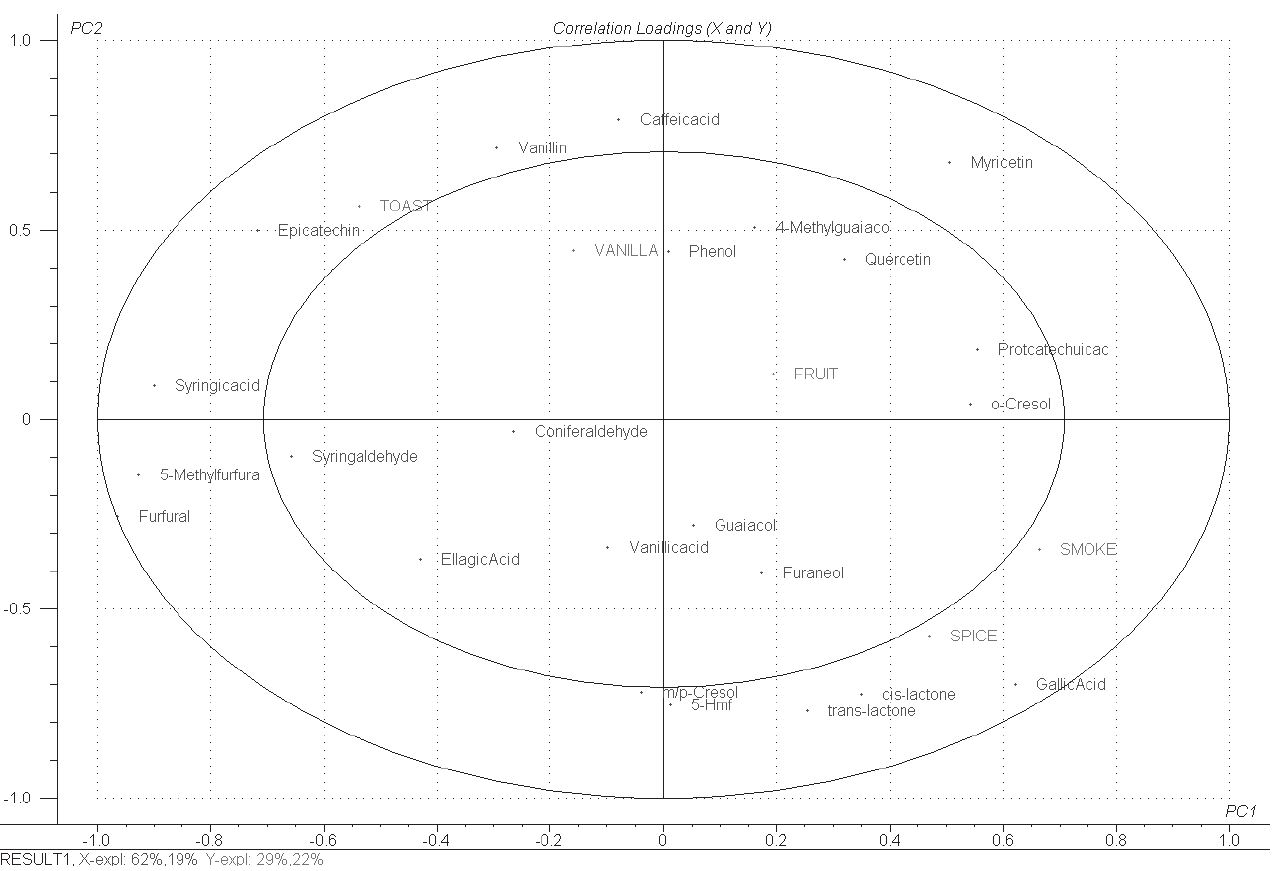
Figure 7 shows a positive correlation of the toast attribute with furfural, 5-methy furfural, and vanillin. Vanillin is a compound that often is correlated to the perception of toast, but it comes from lignin and not from hemicellulose as do furfural and 5-methyl furfural. Due to the heat treatment, all these compounds are formed at different levels depending on the temperature and time designed for the process. There is a positive correlation of m/p-cresol and 5-hydroxy methyl furfural with the smoke attribute. It is common to see an overlap of smoke and toast perception because the formation of the compounds responsible for both attributes happen at similar temperatures. It is not a surprise to see furfural or other compounds in the same group correlated to smoke and/or toast.
The last sensory test completed by the tasting panel was a preference test and because preference is very personal these results are only valid for this group.
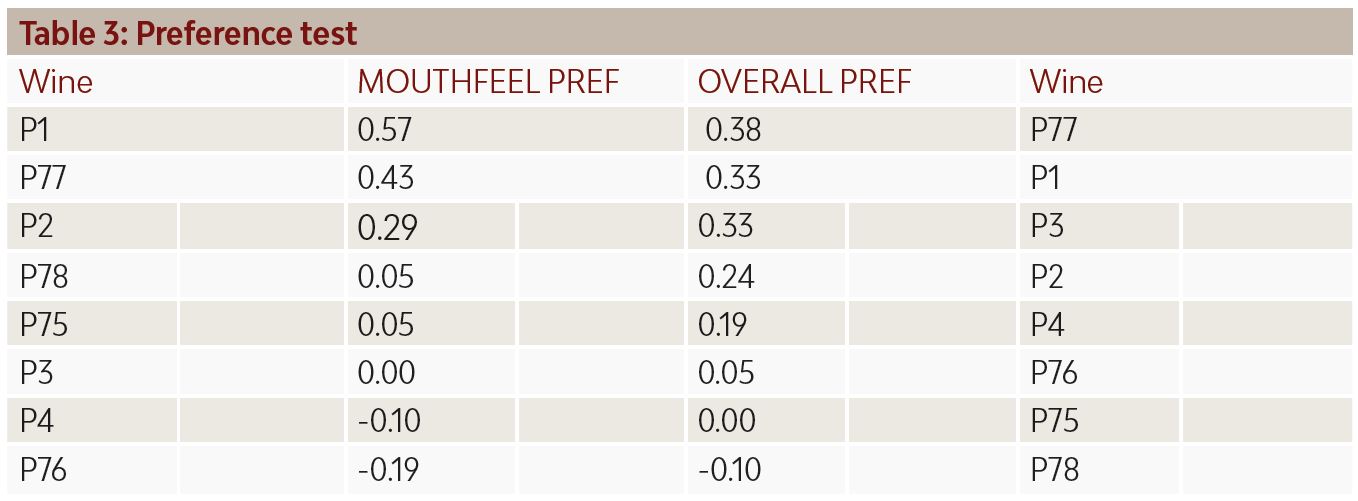
Conclusion
It may be concluded, therefore, that the chemical analysis indicates that the desired changes to increase toast were achieved.
Sensory-wise, 75% of the toastier profiles were perceived to be toastier than the correspondent original profile. The objective of creating toastier versions of four well-accepted profiles was achieved. Using the knowledge of years of experience designing and toasting barrels made it possible to slightly modify the toasting curves of four barrel profiles to create four toastier versions, while respecting the stylistic intentions of the original profiles.
Tasting Results
Which wine did you prefer?
French oak Profile 78 — 44%
French oak Profile 04 — 56%
Which wine was toastier?
French oak Profile 78 — 51%
French oak Profile 04 — 49%
Which wine did you prefer?
French oak Profile 03 — 48%
French oak Profile 77 — 52%
Which wine was toastier?
French oak Profile 03 — 38%
French oak Profile 77 — 62%
Which wine did you prefer?
French oak Profile 01 — 41%
French oak Profile 75 — 59%
Which wine was toastier?
French oak Profile 01 — 42%
French oak Profile 75 — 58%
Which wine did you prefer?
French oak Profile 76 — 32%
French oak Profile 02 — 68%
Which wine was toastier?
French oak Profile 76 — 55%
French oak Profile 02 — 45%
